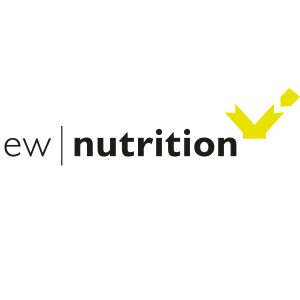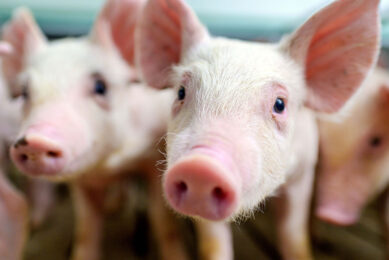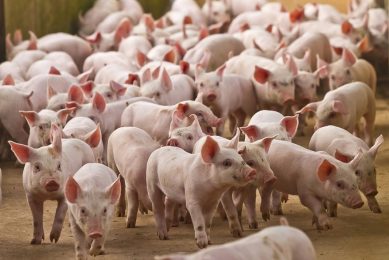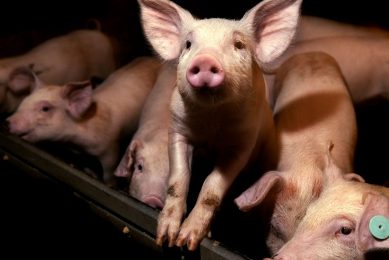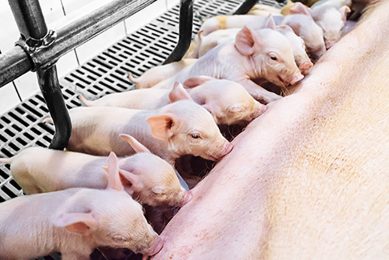Antioxidant benefits in pig feed
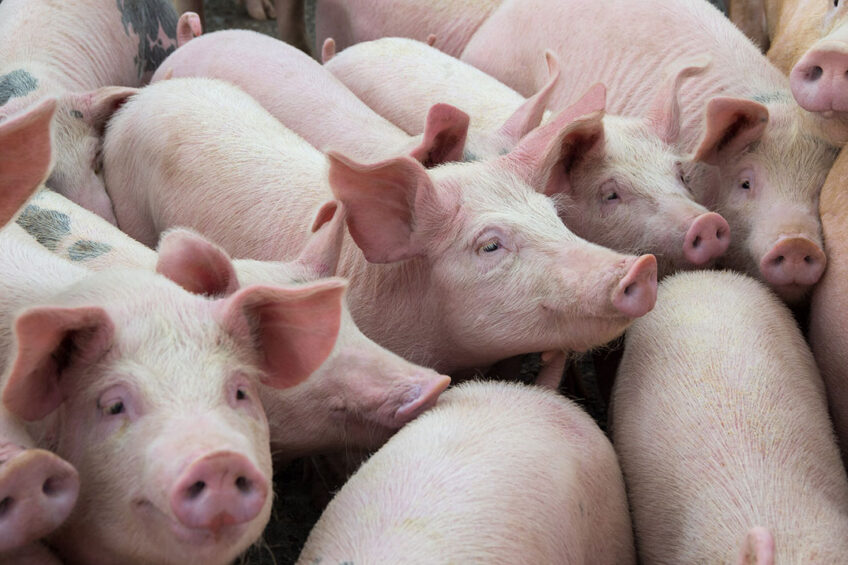
This article aims to highlight why oxidation in feed can become a big concern for swine producers, what the problems resulting from oxidation in pig feed are, and present practical solutions to improve feed quality and pig performance by controlling the oxidation.
In modern swine production, one of the key aspects for success is a balanced diet, ensuring that the animal meets its daily nutritional requirements for maintenance, growth, and reproduction. To provide an appropriate diet and safe feed for the animals, the sensory and nutritional characteristics of the feed must be preserved. Therefore, issues like the oxidation of the feed must be avoided.
Feed oxidation: Why must we address that?
In pig diets, various sources of lipids are added to increase caloric density, provide essential fatty acids, improve feed palatability, improve pellet quality, and reduce dust. Some of the feed ingredients are more susceptible to oxidation because of their physical and chemical characteristics, such as milled grains and ingredients of animal origin and vegetable oils with a high content of polyunsaturated fatty acids.
Oxidative rancidity is a type of lipid deterioration. In the oxidation process, the free radicals react with lipids and proteins and induce cellular and tissue damage.
Some consequences of oxidative deterioration are the destruction of fat-soluble vitamins, supplemental fats, and oils. Preserving these ingredients is crucial because fats and oils provide a high quantity of energy and essential fatty acids. At the same time, vitamins, such as those present in vitamin premixes, are indispensable for optimal animal growth and performance.
The oxidation process also results in by-products with strong unpleasant taste and odour, and even toxic metabolites. In addition, oxidised feed has less protein, amino acids, and energy content. All these factors are relevant when resources, in the current scenario of high prices of feed ingredients and inputs, might be wasted due to poor feed management.
Performance losses caused by oxidation
Lipid oxidation can incur several losses regarding the pigs’ performance. Feeding oxidised lipids significantly decreases growth rate, feed intake and efficiency, immune function, and weight gain efficiency in pigs, especially in breeding animals, since the exposure occurs over long periods.
The ingestion of products resulting from the oxidative deterioration of fatty acids leads to irritability of the intestinal mucosa, diarrhoea, and, in extreme cases, can result in liver degeneration and cell death. One study observed reduced growth rates in pigs that are fed rancid white grease. Another study reported that feeding oxidised sunflower oil increased oxidative stress markers in the small intestine of pigs, while another reported that feeding pigs oxidised corn oil reduced growth performance (Table 1). Lu et al. (2014a) reported signs of liver damage in pigs subjected to dietary oxidative stress, increasing plasma bilirubin content, and enlarged liver size.
Table 1 – Effects of dietary corn oil quality and antioxidant inclusion on barrow performance. Source: Boler et al., 2012

There are some theories as to why oxidised feed causes such effects. According to Dibner et al. (1996), vitamins and polyunsaturated fatty acids deteriorate in the absence of antioxidants, and oxidised fats and their byproducts can negatively affect cells, resulting in changes in membrane permeability, viscosity, secretory activity, and membrane-bound enzyme activity. These primary effects lead to observable systemic effects. To prevent these damaging consequences, antioxidants have become a widely used alternative.
The power of antioxidants
Chemical antioxidants (Table 2) are added to animal feeds to delay fat and vitamin oxidation, which keeps the diet palatable and helps prolong the feed’s shelf life, ultimately maintaining the quality of the ingredients. They prevent the binding of oxygen to free radicals. Dietary antioxidants have also been used in several species of animals to replace vitamin E, which is known for its antioxidant powers. Antioxidants are highly applicable in warm climates, when high levels of fat are added to the diet, and in areas where byproducts high in unsaturated fats are commonly used.
Table 2 – Commonly used chemical antioxidants.

Preserving feed quality
From a practical standpoint, swine producers must consider some criteria for selecting a good antioxidant, which must preserve feed components, be non-toxic for humans and pigs, show effectiveness at very low concentrations, and be economically sustainable.
Considering those major characteristics, EW Nutrition offers a range of antioxidant solutions for the preservation of feed ingredients and feeds for poultry and swine through their Santoquin product line. Santoquin is a feed preservative that protects supplemental fats, oils, meals, and vitamin premixes and protect feed from oxidation. Santoquin provides unsurpassed protection from oxidative rancidity, and it has proven effects against oxidation in feeds (Figure 1) ensuring the prolonged shelf life of feeds, especially during suboptimal storage conditions, such as those with high environmental temperature and elevated levels of moisture.
Figure 1 – Antioxidant efficacy and competitiveness.

Studies have been conducted to show the beneficial effects of Santoquin. Ethoxyquin, contained in Santoquin, has been used in the swine industry for over five decades and has been shown to improve growth performance and markers of oxidative status in pigs. Ethoxyquin is also known for being the most efficacious and cost-effective antioxidant. One study showed that the addition of an antioxidant blend (ethoxyquin and propyl gallate) protected pigs fed with a high-oxidant diet from oxidative stress more efficiently than vitamin E supplementation (Figure 2).
Figure 2 – Concentrations of vitamins A and E across treatments in the plasma (A) and muscle (B). Source: Lu et al., 2014b.

Many benefits of using antioxidants
The negative effects of oxidation in pig feed can result in diets with lower biological energy value. To avoid that, antioxidants help maintain intestinal health, ensure a safe food intake, preserve the ingredients and resources used in pig production. Overall, antioxidants help swine producers improve feed conversion and achieve more productive animals and lower mortality caused by toxicity. At the end of the day, the use of antioxidants is associated with better profitability.
References are available on request
Author: Fellipe Freitas Barbosa, Team Lead Global Technical Management – Swine, EW Nutrition


